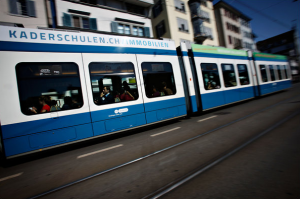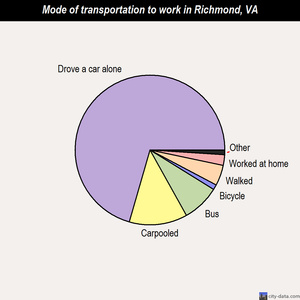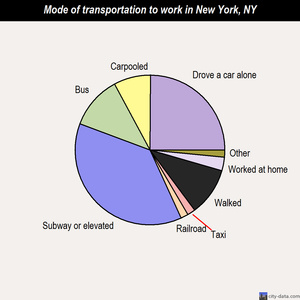Check out the two links above. The first stresses the need for cities to grow upwards rather than out; the second provides a neat article about urban farming. While these links do not talk in depth about transportation and urban roads, implementing the changes put forth would have drastic effects. The need for roads would be greatly reduced without the need to ship food into cities and commuters would not need roads in order to get to work if they lived an worked in the same building.
Category Archives: Urban
NYC High Line Inspires Other Cities to Follow Suit
This Curbed NY collection chronicles some of the many proposed NYC High Line “copycats” currently in the review process. While the tone of the write ups indicates a bias that suggests nothing con compete with the High Line, the amount of spin off projects shows how the success of one green reclamation project can inspire others to pursue the same goals in lieu of further development. Jersey City, for example, wants to convert its Harsimus Stem Embankment into a public park instead of allowing the current owner to destroy the structure and build homes.
Seeing Savannah in Eco-friendly Style
Savannah, Georgia and many other cities around America have seen the introduction of a multi-person pedal-powered street cruiser. This strange looking traveling table is essentially a 15-person bicycle that hits incredible speeds of 5 mph!
Environmentally friendly with it’s lack of exhaust fumes and a good workout, Savannah Slow Ride is a great way to tour the city with a guilt-free conscience. Isn’t it so much healthier to park the car and enjoy the fresh air and conversation with some friends on a pleasant Savannah evening?
The following link takes you to a video about this funky bike-mobile and adds in the bonus of another fun and environmentally friendly way to get around the city: Segways.
World Bank Project: Urban Transportation in Colombia
In this youtube video, http://www.youtube.com/watch?v=qOUFd6mqioI
we learn about a World Bank project to develop a mass urban transportation system in major cities of Colombia. The project is supposed to bring a number of social and economic benefits to the people of Colombia. There is also an environmental component to the project, as trees will be planted to promote green spaces in urban areas.
How Do You Get to Work?
It’s Monday morning and you step out of your house to head to work for the day. What’s your mode of transportation? Do you hop in your car and drive alone? Do you walk to the nearest subway station and head into the city that way? Using www.city-data.com, I found pie charts displaying the different types of transportation people use to get to work every morning in US cities. Below is a comparison between Richmond, VA and New York City, NY.
Over the years, I believe people in most US cities, including Richmond and New York, will cut back on driving a car alone to work. Cities could then use large parking lots and other cement areas as places for parks with trees, plants, and wildlife. The benefits of creating more green spaces within cities should outweigh the costs of using alternative transportation modes instead of a car. What are your thoughts on the issue?
Transforming urban space as energy sources

Solar panels line the parking lot outside of Dell Headquarters in Round Rock, Texas. (Photo credit: Envision Solar)
This New York Times article, “The Parking Lot as ‘Solar Grove’”, proposes a fascinating idea for urban development. An architect with Envision Solar sought to transform parking lots into more than just open, wasted space for vehicles. The idea was to build solar panels over parking spaces, which makes sense as a means to generate electricity for nearby urban infrastructure, especially with an enhanced smart grid system that could regulate power during peak demand hours. A major criticism of electric-powered cars, the article explains, is that manufacturers will create a huge demand for more energy — which would likely be powered by fossil fuel burning. Solar expansion over parking lots is a step in the right direction, adding the ability for drivers to charge their cars while shopping or at work. Panels can be implemented in other ways too. I think we need to begin thinking how smart developments like this can propose new ways of turning the traditional “concrete jungle” into useful, environmental spaces.
Structural Organization of Urban Areas Affects Public Transport
I found a study conducted in Milan, Italy that concluded the nature of urban expansion influences the degree of urban mobility and the competitiveness of public transportation. Urban sprawl, which results in more dispersed and less structured development, represents one of the least environmentally acceptable solutions in the study and is associated with the lowest level of public transport. A link to the study is provided at the bottom of the page. A NASA webpage that examines the impacts of fast growing urban areas provides a useful connection between the study that I found and the spatial extent of the environmental impacts of urban sprawl. There is a neat reconstruction of the growth of Baltimore over the past 200 years. Enjoy!
Across Europe, Irking Drivers is Urban Policy

As the city of Zurich has made harder for people to drive cars into the city, it has also improved public transport, with an elaborate and ever expanding system of trams. Here, a tram drives down Limmatquai, one of many streets that have been made "car-free" in the past decade. Photo credit: Christoph Bangert for The New York Times
According to “Across Europe, Irking Drivers is Urban Policy,” an article found in the New York Times, a car takes up about 4,000 cubic feet of urban space in Zurich while a person only takes up 3. Large cities in the United States have the tendency to alter their cities to accommodate driving; however European cities such as Zurich Vienna, Munich, and Copenhagen have been taking steps to make cities more livable for people. The idea is simple: to create environments that are openly hostile to cars thus forcing people to use more environmentally friendly forms of transportation. In Zurich measures such as adding closely spaced red lights on roads to create delays, removing pedestrian underpasses, and banning cars on some blocks are being taken. Results have shown that these methods are proving to be effective. Households without cars have increased from 40 percent to 45 percent and car owners are using their cars less. US cities such as San Francisco and New York are slowly taking similar action, but are still lacking fundamental support and policy. I leave you with the following statement made by a city official, “I feel like I am always waiting to cross the street. I can’t get used to the idea that I am worth less than a car.”
Make Impermeable Roads Permeable?
Innovators: Better Roads Ahead
Researchers at Washington State University discuss problems involved with the construction and use of roads in urban settings. Once a city is paved and the quantity of permeable land is reduced, pollution builds up on roads, awaiting the next heavy rainfall to wash it away. Since this rain is then unable to reenter ground water due to the pavement, it instead flows into sewers and directly into waterways. This inhibits the ground from filtering the pollutants and flushes large quantities of the pollutants into rivers and streams in a short time. These researchers purpose a new type a pavement that would allow for water to permeate through it and enter the ground, helping to mitigate the issue.
Podcast: Play in new window | Download
Increased Car Ownership and Growing Environmental Concerns

Driving in India (http://helloji.files.wordpress.com/2008/10/driving-in-india_1.jpg)
Car ownership is increasingly feasible for citizens in around the world, as companies like Renault-Nissan work to develop cars that sell for as little as $2,500. While low-cost cars increase accessibility to transportation for many people, smog and traffic congestion are growing issues in clogged urban centers like New Delhi, India and Bangkok, Thailand. As auto transportation becomes more popular, however, it introduces many environmental issues such, as air and water pollution, which local governments in developing countries may not have the means to mitigate.






